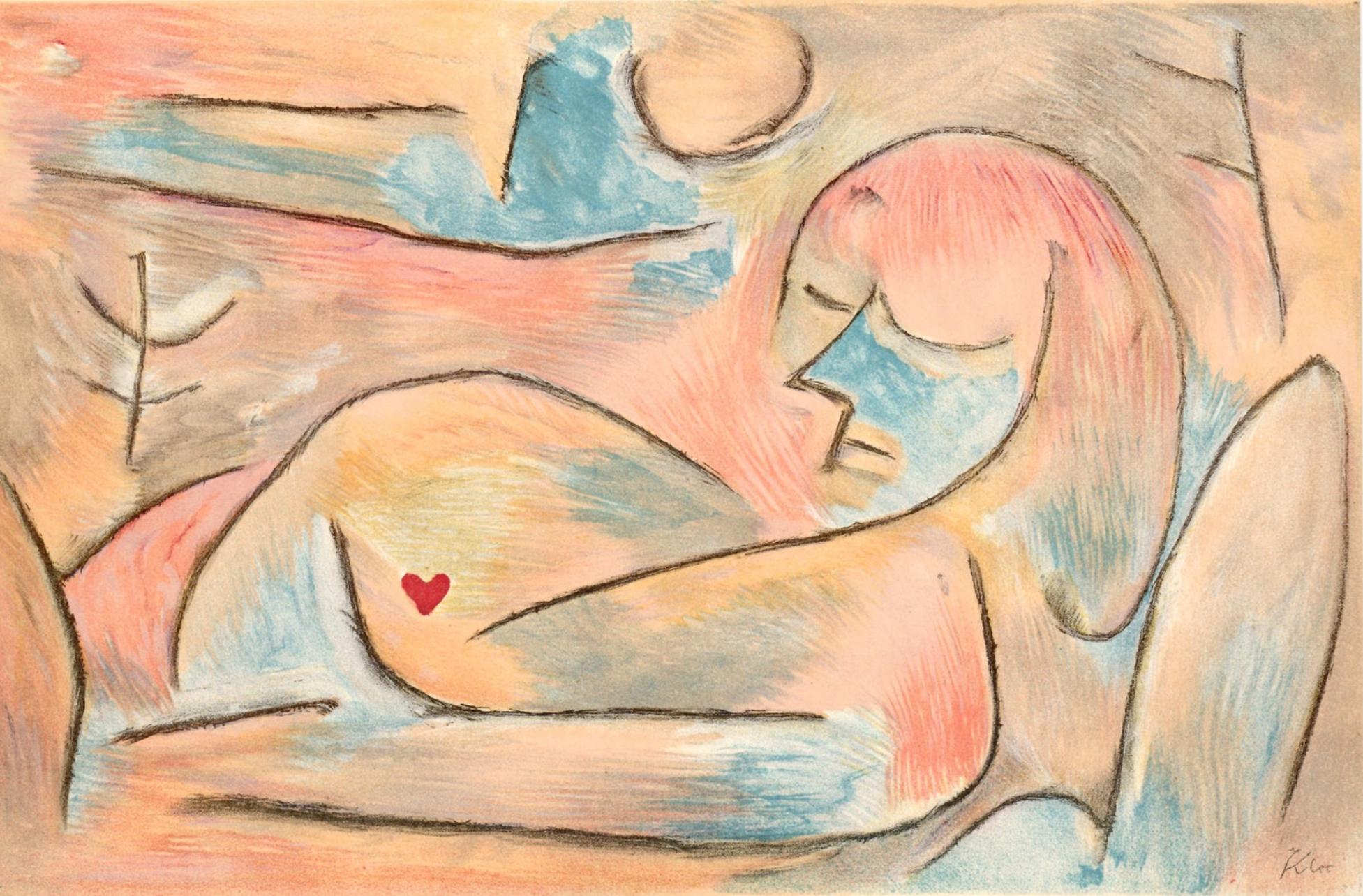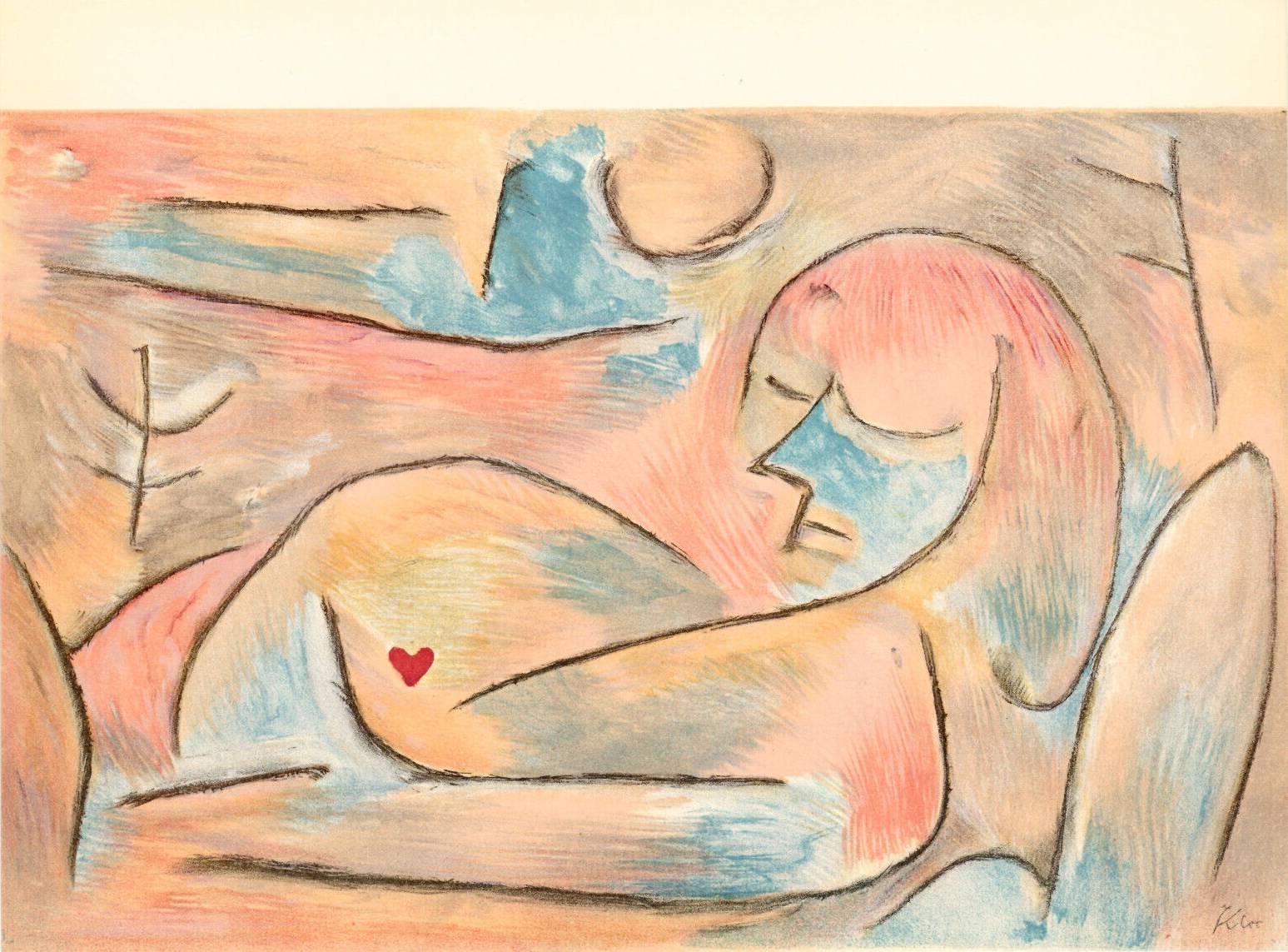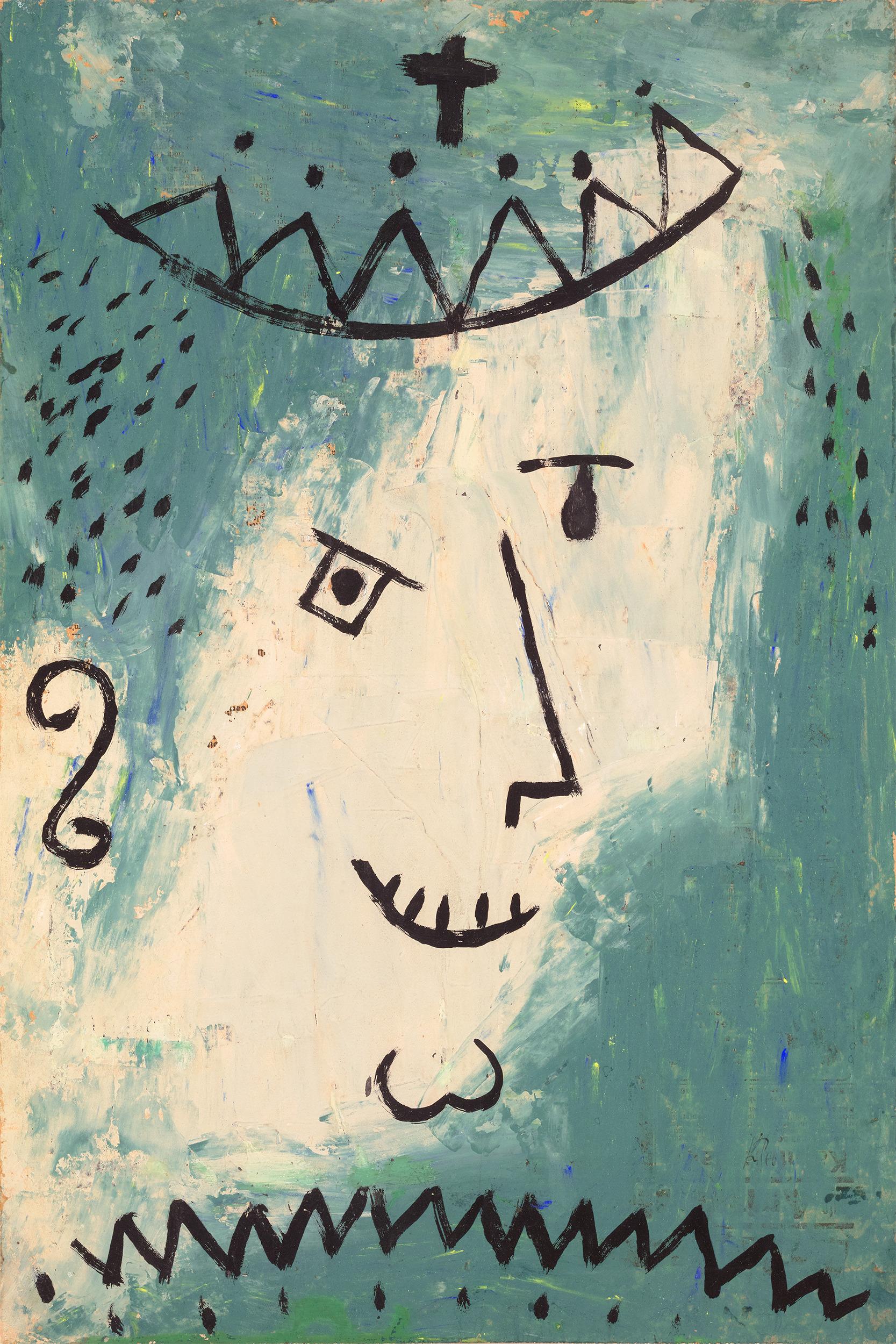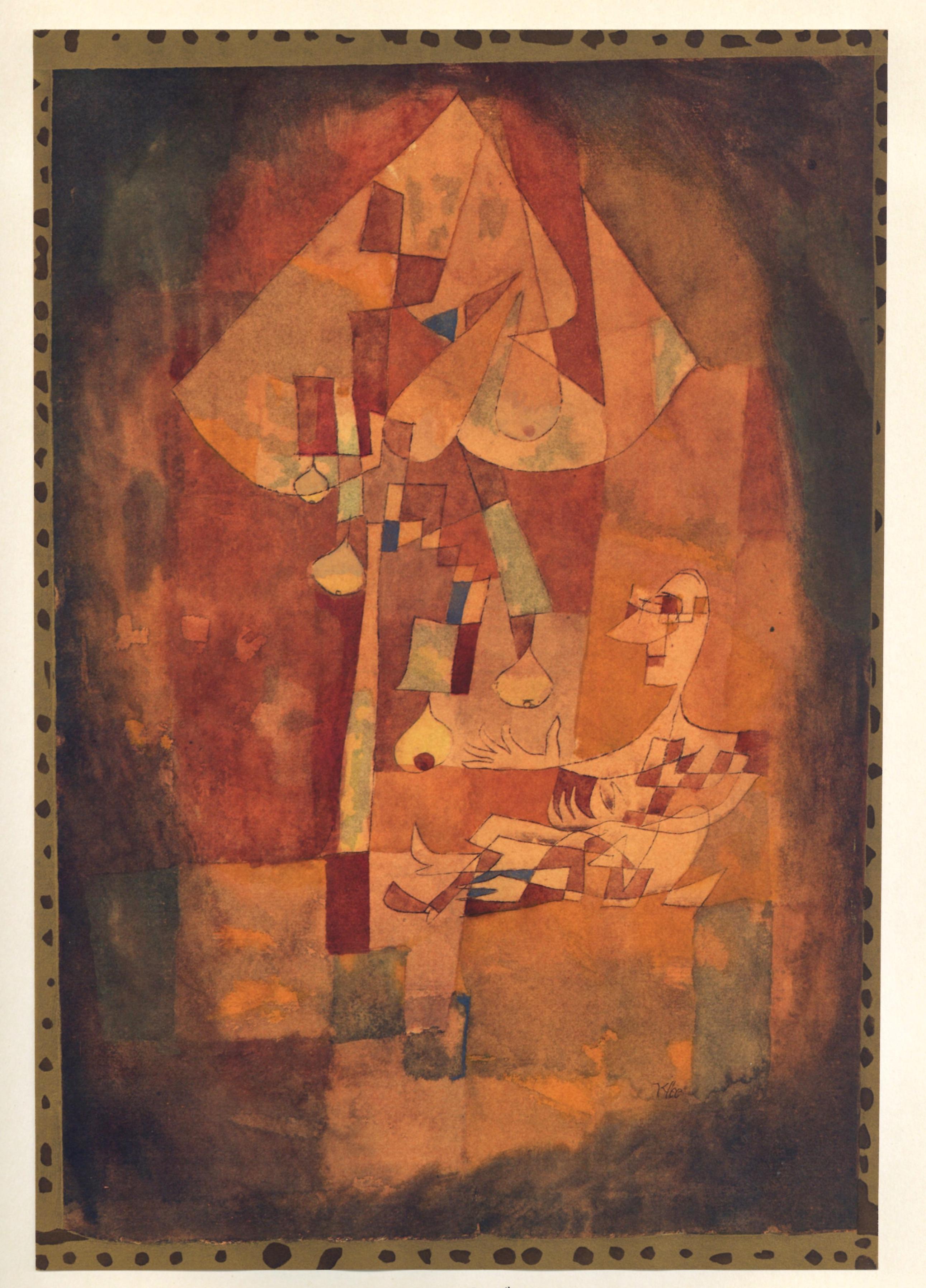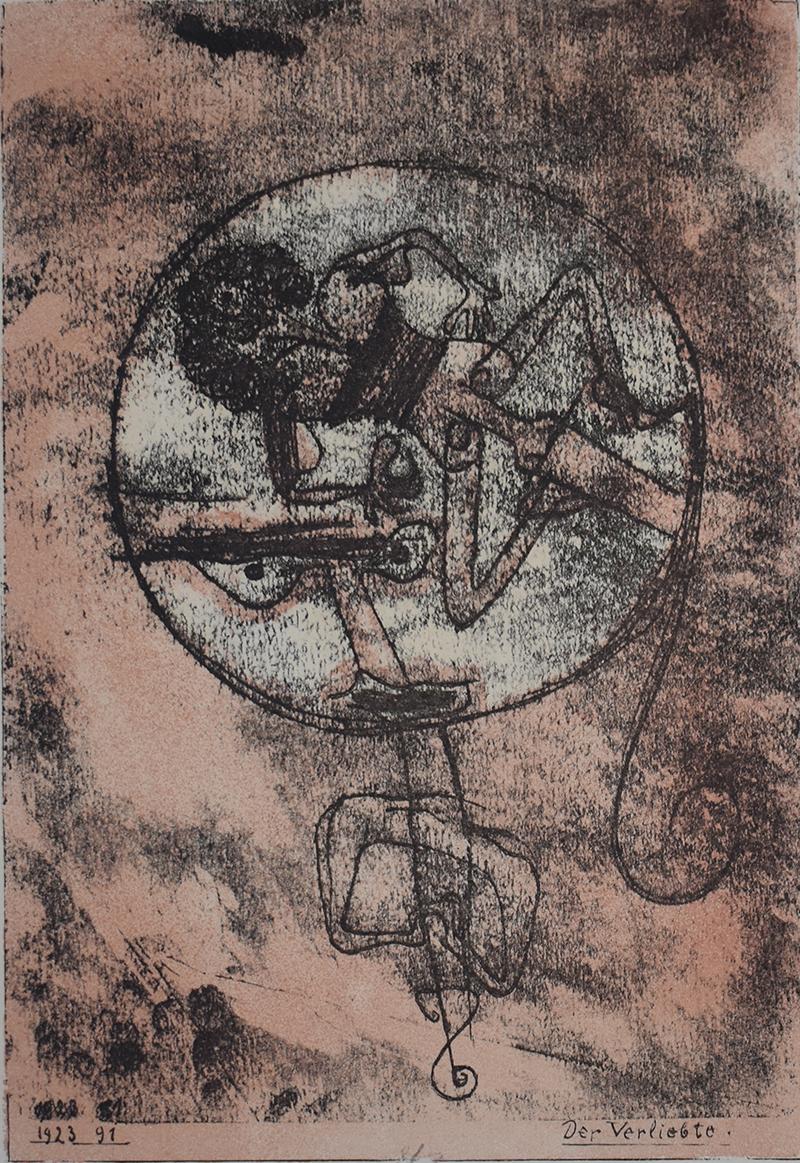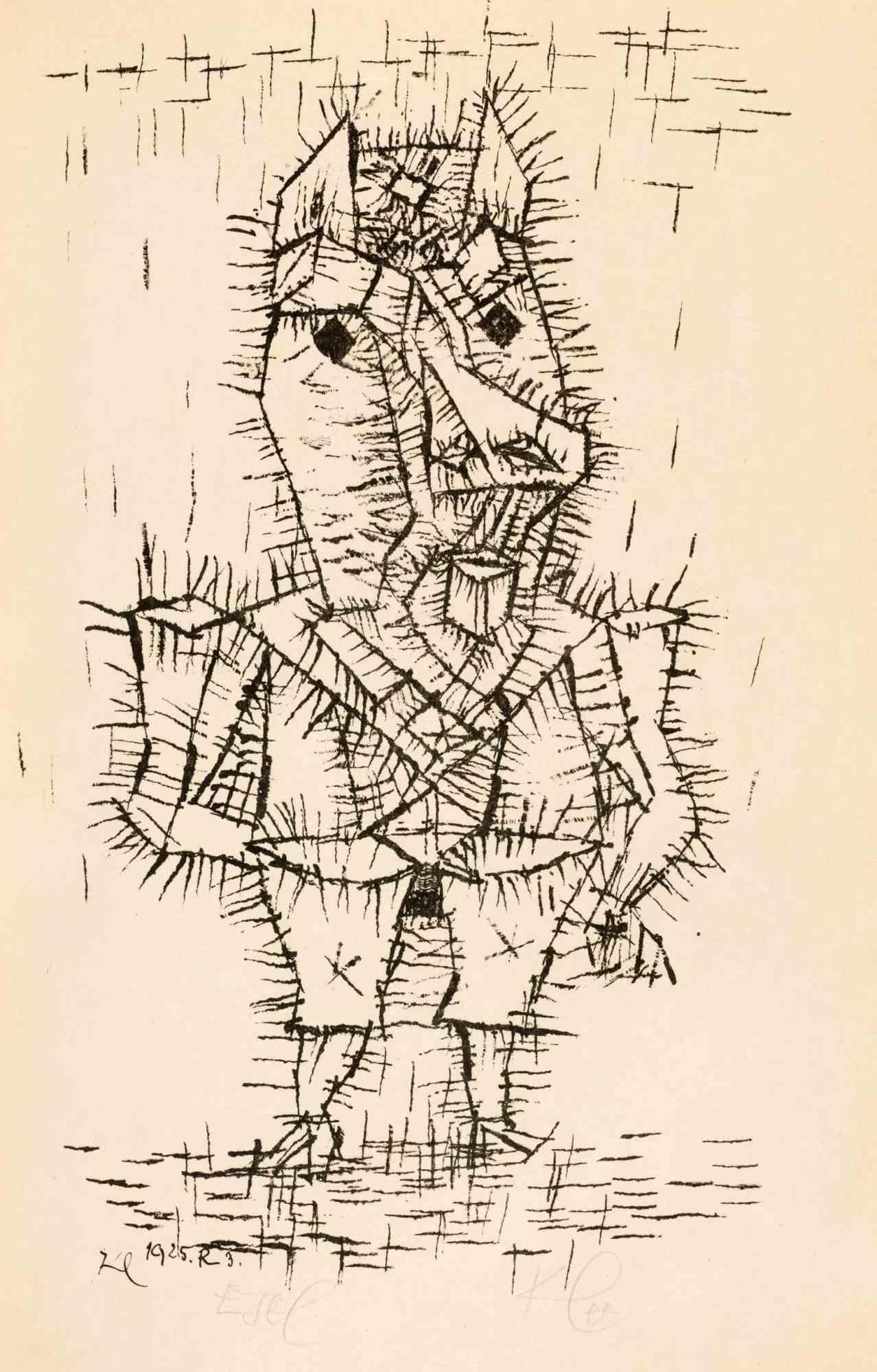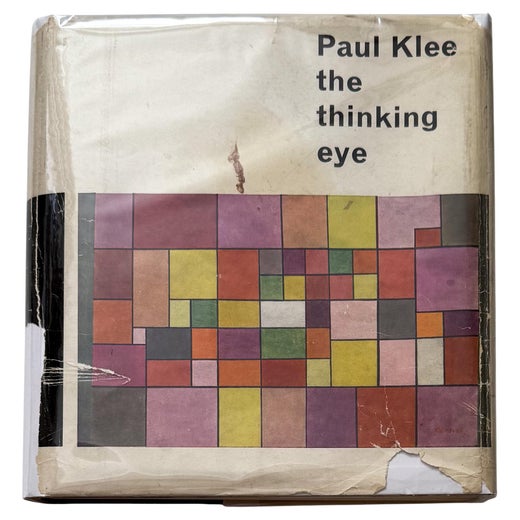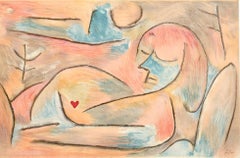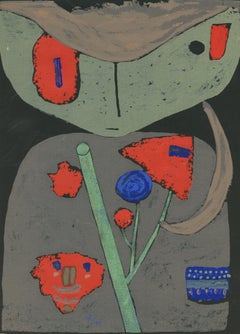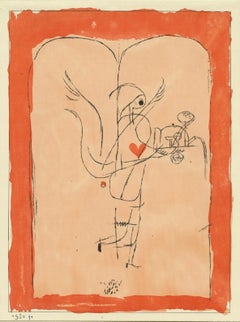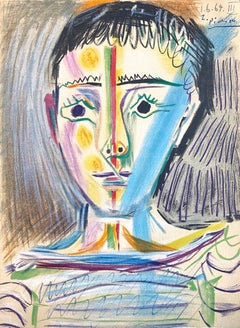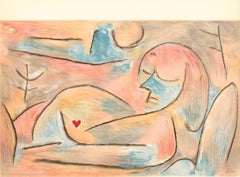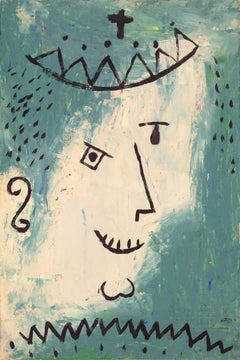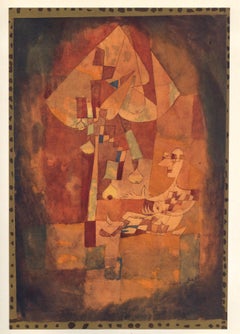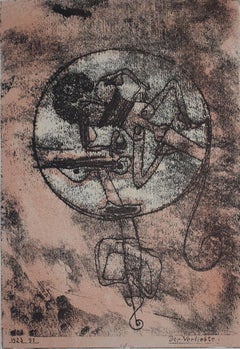This exquisite lithograph by Paul Klee (1879–1940), titled Tete d’enfant (Child’s Head), from Verve, Revue Artistique et Litteraire, Vol. II, No. 5–6, originates from the 1939 issue published by Editions de la revue Verve, Paris, under the direction of Teriade, Editeur, Paris, and printed by Mourlot Freres, Paris, 1939. This evocative and delicate composition captures Klee’s profound ability to merge simplicity and depth, embodying both innocence and introspection. Tete d’enfant reflects the artist’s fascination with the purity of childhood and the spiritual dimension of line and color. Through subtle tonal harmony and rhythmic balance, Klee transforms the child’s visage into an abstract meditation on emotion, perception, and inner life—a hallmark of his visionary synthesis of form and feeling.
Executed as a lithograph on velin du Marais paper, this work measures 14 x 10.5 inches (35.56 x 26.67 cm). Unsigned and unnumbered as issued. The edition exemplifies the superb craftsmanship of the Mourlot Freres atelier, celebrated for its collaborations with the foremost modern artists of the 20th century.
Artwork Details:
Artist: Paul Klee (1879–1940)
Title: Tete d’enfant (Child’s Head), from Verve, Revue Artistique et Litteraire, Vol. II, No. 5–6, 1939
Medium: Lithograph on velin du Marais paper
Dimensions: 14 x 10.5 inches (35.56 x 26.67 cm)
Inscription: Unsigned and unnumbered as issued
Date: 1939
Publisher: Editions de la revue Verve, Paris, under the direction of Teriade, Editeur, Paris
Printer: Mourlot Freres, Paris
Condition: Well preserved, consistent with age and medium
Provenance: From Verve, Revue Artistique et Litteraire, Vol. II, No. 5–6, published by Editions de la revue Verve, Paris, 1939
About the Publication:
Verve, Revue Artistique et Litteraire was one of the most influential art periodicals of the 20th century, founded in Paris in 1937 by the visionary publisher Teriade (Stratis Eleftheriades). Conceived as a synthesis of art and literature, Verve brought together the greatest modern artists and writers of its time—Henri Matisse, Pablo Picasso, Marc Chagall, Georges Braque, Joan Miro, Fernand Leger, and others—alongside poets and philosophers such as Paul Eluard, Albert Camus, and Jean-Paul Sartre. Each issue was a masterpiece of design and craftsmanship, uniting original lithographs printed by the renowned Mourlot Freres with finely reproduced texts and illustrations. The 1939 double issue, Vol. II, No. 5–6, stands among Verve’s most historically significant publications, produced on the eve of World War II as a celebration of artistic creativity and the enduring spirit of beauty and imagination.
About the Artist:
Paul Klee (1879–1940) was a Swiss-German painter, draftsman, printmaker, and teacher whose boundless imagination, lyrical abstraction, and profound mastery of color made him one of the most influential artists of the 20th century. Born in Munchenbuchsee near Bern, Switzerland, into a family of musicians, Klee’s early training in both art and music shaped his belief that painting, like music, was governed by rhythm, harmony, and composition. After studying at the Academy of Fine Arts in Munich under Franz von Stuck, Klee explored Symbolism, Impressionism, and Cubism before a transformative 1914 trip to Tunisia revealed to him the spiritual power of color. “Color and I are one,” he wrote—a revelation that defined the rest of his career. Following World War I, Klee became a central figure at the Bauhaus, where he taught alongside Wassily Kandinsky, Laszlo Moholy-Nagy, and Josef Albers, developing groundbreaking theories on form, line, and color that shaped the evolution of modern art and design. His works—ranging from mystical abstractions to whimsical compositions—merge geometry, intuition, and poetry, forming a visual language that transcends traditional boundaries. Engaging in creative dialogue with contemporaries including Pablo Picasso, Alexander Calder, Alberto Giacometti, Salvador Dali, Joan Miro, Wassily Kandinsky, Marcel Duchamp, and Man Ray, Klee shared their revolutionary spirit yet stood apart for his uniquely introspective vision. His delicate balance of intellect and emotion profoundly influenced later artists such as Mark Rothko, Jackson Pollock, Cy Twombly, Jean Dubuffet, and Josef Albers, whose own explorations of color and abstraction echoed his teachings. Even in exile and ill health in his final years, Klee’s art retained its vitality, evolving toward bolder line and spiritual depth. Today, his works are held in major museum collections worldwide, including MoMA, the Tate Modern, the Centre Pompidou, and the Zentrum Paul Klee in Bern, and are prized by collectors for their innovation, lyricism, and timeless beauty. His highest auction record was achieved by Tanzerin (Dancer) (1932), which sold for $7,483,000 at Christie’s, New York, on November 8, 2011, reaffirming Klee’s enduring legacy as one of the most poetic and visionary artists in the history of modern art.
Paul Klee Tete d’enfant, Klee Verve, Klee Mourlot Freres, Klee Teriade, Klee 1939 lithograph, Klee velin du Marais, Klee Revue Artistique et Litteraire, Klee collectible print, Klee modernist lithograph.
